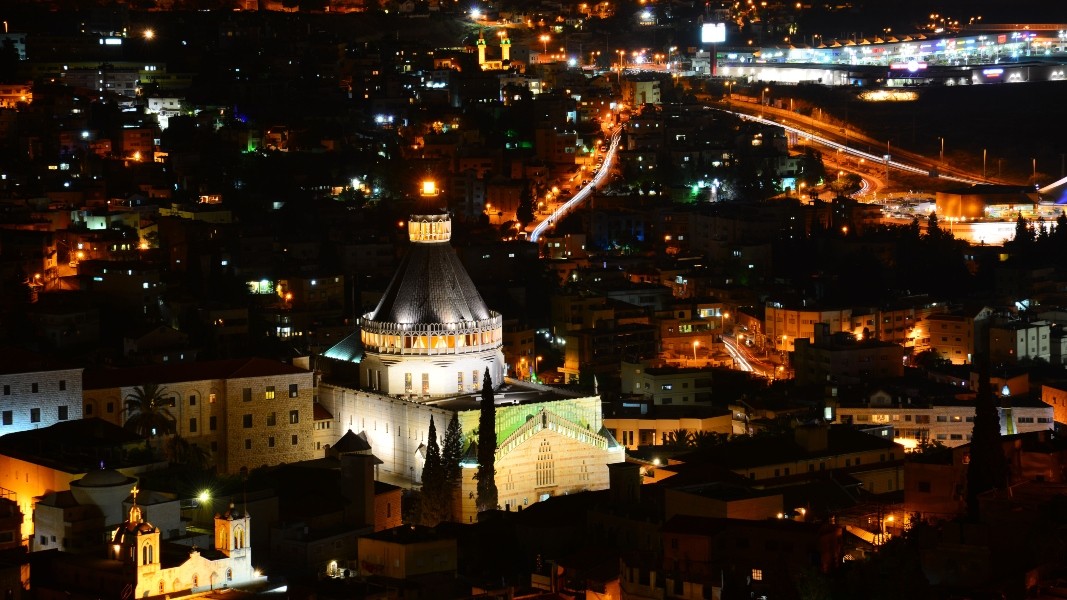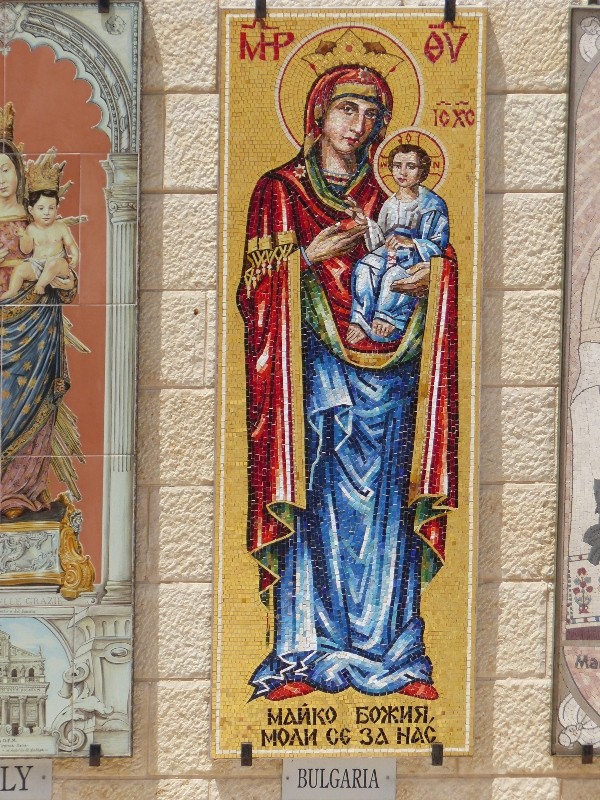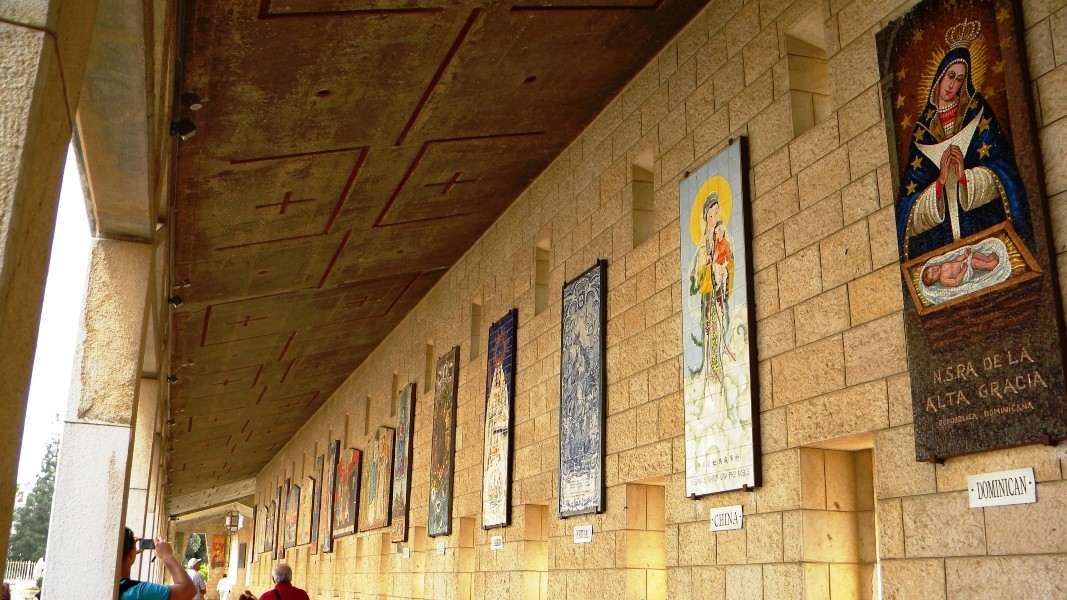The Israeli town of Nazareth is often called “The Flower of the Galilee”, and also the town of the Annunciation – the place where Virgin Mary received the good tidings that she had been chosen to give birth to the Son of God. Once Joseph and Mary lived there, and Jesus spent his childhood there after the return of the Holy Family from exile to Egypt.
Wrapped in mysticism and legends about the life of Jesus the Nazarene, this fairytale town has several temples dedicated to the Feast of the Annunciation. The largest of these is the Catholic one built in 1750 by the Order of the Franciscans and renovated in 1969. It has an interesting tradition - Catholic communities around the world donate various mosaic icons in honour of the Mother of God. One of them is Bulgarian.

In fact, two of the churches in Nazareth, the Catholic and the Orthodox one, bear inscriptions that they were built in places where the angel of the Lord is supposed to have appeared to the Virgin Mary.
According to one legend, the Virgin Mary was at the Holy Spring when Archangel Gabriel appeared to her and told her, "Blessed art thou among women!" Therefore, as early as the 4th century, a chapel was erected on this site, which is believed to have been built on the orders of Roman Emperor Constantine. The present temple was built on its foundations, and the spring still exists in its basement. Just above the spring, in the church itself, one can see a miraculous icon depicting the meeting at the spring. There is a belief that a woman who dreams of conceiving will become pregnant if she drinks from this water for 30 days.
 Another legend says that Archangel Gabriel appeared to the pious and faithful Virgin Mary in the house of Joseph, whom she was betrothed to. As she was reading the prophecy of Isaiah, she suddenly saw an unknown bright image that spoke to her, "Thou shall have a son and shall call him Jesus." It is at this place, where the home of the Holy Family is supposed to have been located, that the Catholic Basilica of the Annunciation now stands. "It was built in 1969 on the ruins of an old Byzantine church razed to the ground by the Saracens in the 12th century. The three-nave cathedral, lined with white marble, is the largest Christian temple in the Holy Land. The Temple of the Annunciation has an extensive courtyard that also houses outdoor services and various prayer events. On the fence, at the request of the Vatican, mosaic icons of the Virgin Mary are placed, all donated by the countries in which there is a Catholic community. "There are already several dozen such gifts," says tourist guide Reid Nasrallah, a member of the Association of Bulgarian University Alumni in Israel:
Another legend says that Archangel Gabriel appeared to the pious and faithful Virgin Mary in the house of Joseph, whom she was betrothed to. As she was reading the prophecy of Isaiah, she suddenly saw an unknown bright image that spoke to her, "Thou shall have a son and shall call him Jesus." It is at this place, where the home of the Holy Family is supposed to have been located, that the Catholic Basilica of the Annunciation now stands. "It was built in 1969 on the ruins of an old Byzantine church razed to the ground by the Saracens in the 12th century. The three-nave cathedral, lined with white marble, is the largest Christian temple in the Holy Land. The Temple of the Annunciation has an extensive courtyard that also houses outdoor services and various prayer events. On the fence, at the request of the Vatican, mosaic icons of the Virgin Mary are placed, all donated by the countries in which there is a Catholic community. "There are already several dozen such gifts," says tourist guide Reid Nasrallah, a member of the Association of Bulgarian University Alumni in Israel:
"It is interesting that each nation recreates the icon of the Virgin Mary through the characteristics of their national religious notions. If it is from Japan, she resembles a Japanese woman; if it is from Ethiopia, she would look like an Ethiopian woman. Among them one can also see the Bulgarian icon which is placed in the basilica yard, left from the entrance. It is in a very strategic location, close to the large statue of the Mother of God, and worshipers from Bulgaria immediately go to take pictures of it. It was created by artist Stoyan Karageorgiev and was donated by the Catholic community in Bulgaria and brought here in 2013.”
The icon is an example of classic Byzantine style mosaic art and depicts the Madonna with the baby. It was inspired by the icon to the Holy Virgin - The Door of Heaven in the Bulgarian coastal town of Nessebar, which the Apostolic delegate Monsignor Angelo Roncalli (the future Pope John 23rd) used to like so much when he was working in Bulgaria. Under the icon one can see an inscription in Bulgarian language: "Mother of God, pray for us!"

English Rossitsa Petcova
Photos: wikipedia.orgIn today’s world, where material values overshadow the spiritual, reflections on the salvation of souls somehow remain in the background. The constant race against time and the stream of daily tasks muffle the voice of the soul, which struggles to..
In 1018, after half a century of struggle, the First Bulgarian Empire was conquered by Byzantium. Despite the many uprisings of the Bulgarians, the power of Constantinople lasted for nearly two centuries. In the autumn of 1185 or the..
On 19 October, Bulgarians commemorate St Ivan Rilski, also known as St John of Rila, who is considered the country’s heavenly protector. He founded the Rila Monastery, which is the largest and most influential spiritual centre in Bulgaria. Ivan..

+359 2 9336 661
